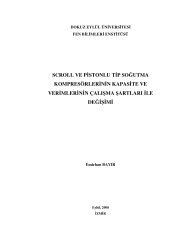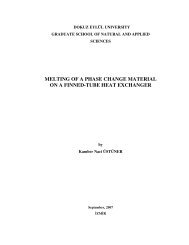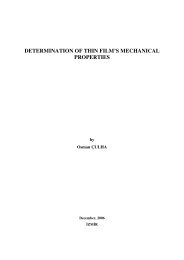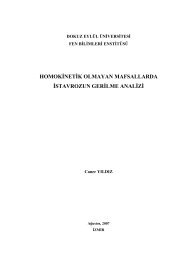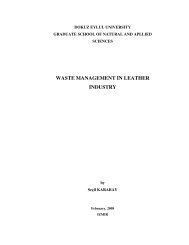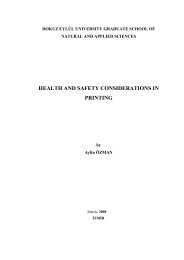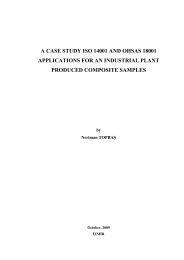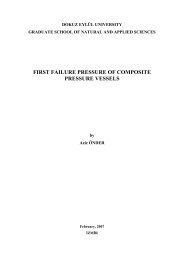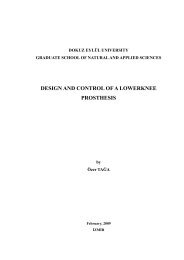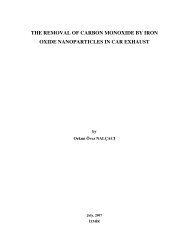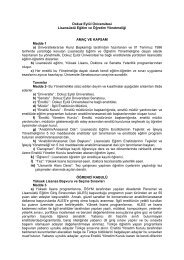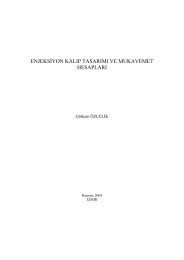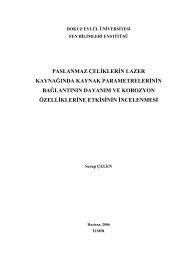DETERMINATION OF THIN FILM'S MECHANICAL PROPERTIES
DETERMINATION OF THIN FILM'S MECHANICAL PROPERTIES
DETERMINATION OF THIN FILM'S MECHANICAL PROPERTIES
You also want an ePaper? Increase the reach of your titles
YUMPU automatically turns print PDFs into web optimized ePapers that Google loves.
29<br />
h<br />
c<br />
Pm<br />
= hm<br />
− ε<br />
(3.8)<br />
S<br />
where Pm is the peak indentation load and ε is a constant which depends on the<br />
geometry of the indenter. With these basic measurements, the projected contact area,<br />
A, is derived by evaluating an indenter shape function at the contact depth, hc, that is<br />
A=f(hc). Finally, substitute S in Equation (3.7) and the projected area A into<br />
Equation (3.5) to obtain the Young’s modulus of the specimen. It is important to note<br />
these equations were derived from pure elastic contact solution derived by Sneddon,<br />
and how well they work for elastic/plastic indentation is not entirely clear. One<br />
important way in which the elastic solution fails to properly describe elastic/plastic<br />
behavior concerns pileup and sink-in of material around the indenter. In the pure<br />
elastic contact solution, material always sinks in, while for elastic/plastic contact,<br />
material may either sink in or pile up. Since this has important effects on the<br />
indentation contact data, it is not surprising that the Oliver-Pharr method has been<br />
found to work well for hard ceramics, in which sink-in predominates, but significant<br />
errors can be encountered when the method is applied to soft metals that exhibit<br />
extensive pileup. It is discussed the influences of pileup on the measurement of<br />
Young’s modulus and pointed out that when pileup is large, the areas deduced from<br />
analysis of the load displacement curves underestimates the true contact areas by as<br />
much as 60% (A.Bolshakov and G.M. Pharr, 1998). This, in turn, leads to<br />
overestimate the hardness and elastic modulus. The parameter,<br />
h f<br />
h max<br />
which can be<br />
measured experimentally and correlated with the material parameters E, ν, σ y and n<br />
dσ<br />
( ) which control indentation deformation, can be used as an indication of<br />
dε<br />
whether or not pileup is an important factor. Pileup is significant only when<br />
h f<br />
h max<br />
>0.7 and the material does not appreciably work harden. When,<br />
h f<br />
h max<br />



